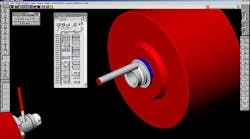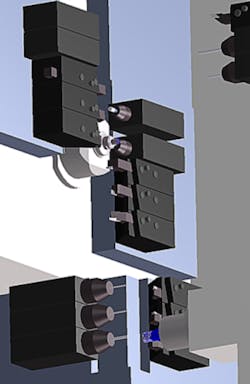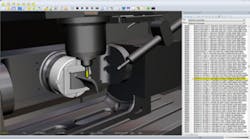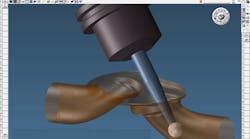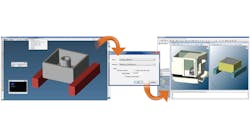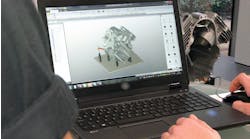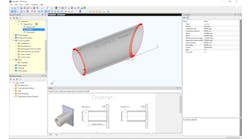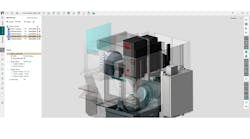Gibbs and Associates reports it will introduce a new CAM engine when it unveils the next version of its machine tool programming platform at IMTS 2014 in September. It calls the new GibbsCAM UKM (Universal Kinematic Machine), which is the anchor for GibbsCAM 2015, “a complete reengineering of the CAM engine and how it relates to machine definitions and machine tools, blurring the line between the definition of mills and lathes.”
“CAM systems were designed based on the way mills and lathes were originally created to move,” explained Bill Gibbs, CEO and President of Gibbs and Associates. “Mill-turns and multi-task machines (MTM) started merging the two.
“GibbsCAM UKM was created from the ground up with no limitations,” he continued. “It can handle any number of axes in any direction, with multiple tools cutting simultaneously. With GibbsCAM UKM, users can program and accurately simulate virtually any machine today and even machines that haven’t been invented yet.”
The software developer noted that the advantages of the GibbsCAM UKM engine extend across its product line, not only to complex machining functions. The improvements include greater accuracy for rendering and Machine Simulation, so customers may be confident that what they see on their screens will happen at the machine. Machine simulation and post-processors are built on the same kinematic model, it added, optimizing the programmer’s time and ensuring complete accuracy.
The UKM architecture is backward compatible, so current post-processors and machine simulation models for GibbsCAM will continue to provide a return on investment. Also, customers will be able to program and simulate complex machines from a wide selection of builders, including machines from Bumotec, Citizen, DMG MORI, Doosan, Matsuura, Mazak, Nakamura-Tome, Okuma, Star, Tornos, Willemin-Macodel, and others.
The developer indicated “significant changes” will be seen in GibbsCAM 2015’s tooling functionality. Along with new tool types (barrel, dovetail, convex tip, E-style ISO insert, and tools defined by solids), GibbsCAM will have a dynamic 3D viewing of tools and tool-holders in the tool dialog, allowing users to accurately visualize the tools they are selecting for the job.
A new tooling “category” has been added, Intermediate Tooling, for items that are neither tools nor fixed parts of the machine, e.g., fixtures (chucks, tailstocks, steadyrests) and toolblocks (adapter blocks, holders for toolholders, etc.) Programmers can create libraries of toolblocks to set-up complex machines easily, and can share those libraries across different parts to conserve time and reducing errors.
GibbsCAM 2015 has other improvements throughout the product line, from geometry creation to toolpath strategies, including additional high-speed machining (HSM) strategies. New functions will aid in importing and machining of hole features. “Holes are now treated as fully associative features of solid bodies,” the developer explained, “including those imported from SolidWorks, Solid Edge, Autodesk Inventor, or CATIA V5.
“Compound holes (holes with multiple segments that might each be tapered or threaded) are now supported, as well,” according to Gibbs and Associates. “New Geometry tools include improved spline editing and contour tracing capabilities. Improvements to machining include new Adaptive Roughing capabilities, pre-drilling and background processing for VoluMill, and many new capabilities for the Tombstone Management System, which has long been recognized as the most comprehensive software for programming parts on a tombstone.”
